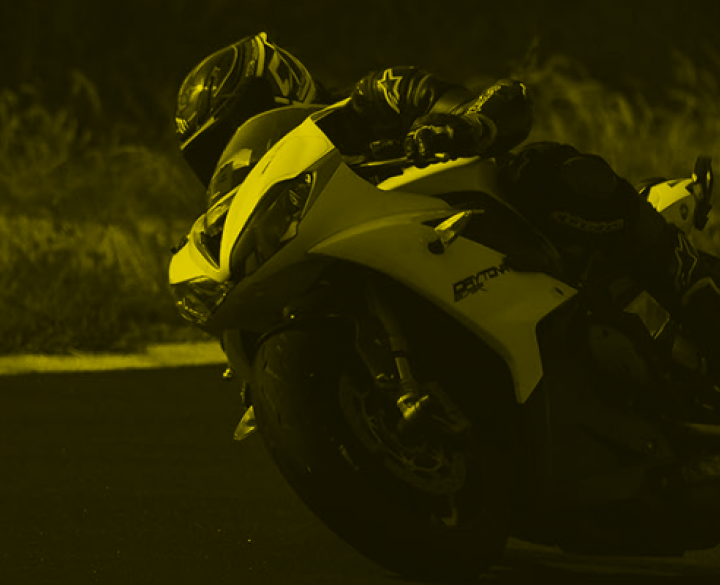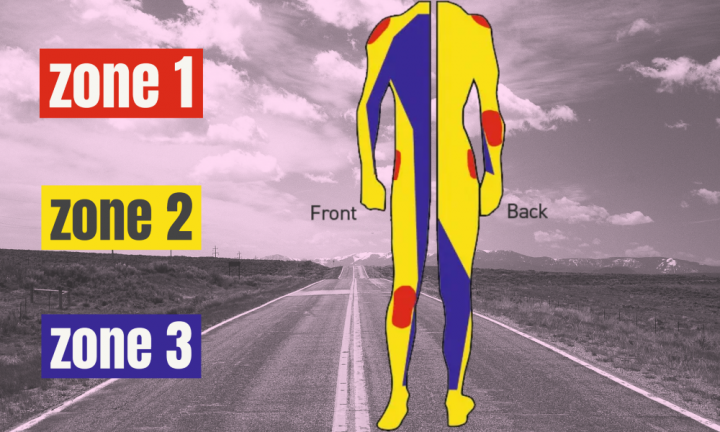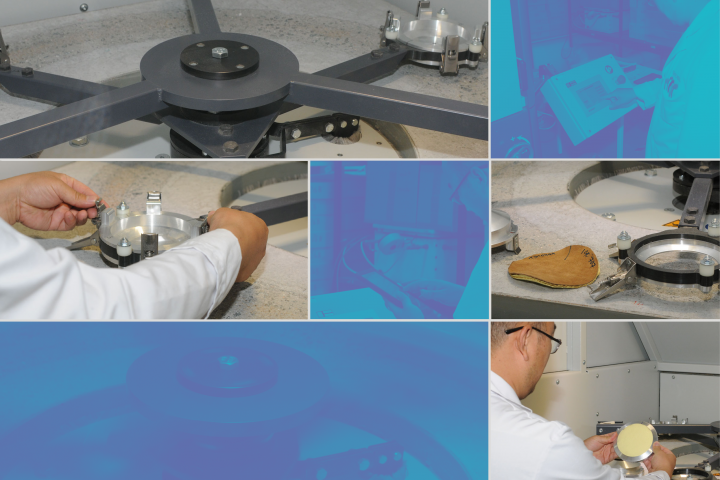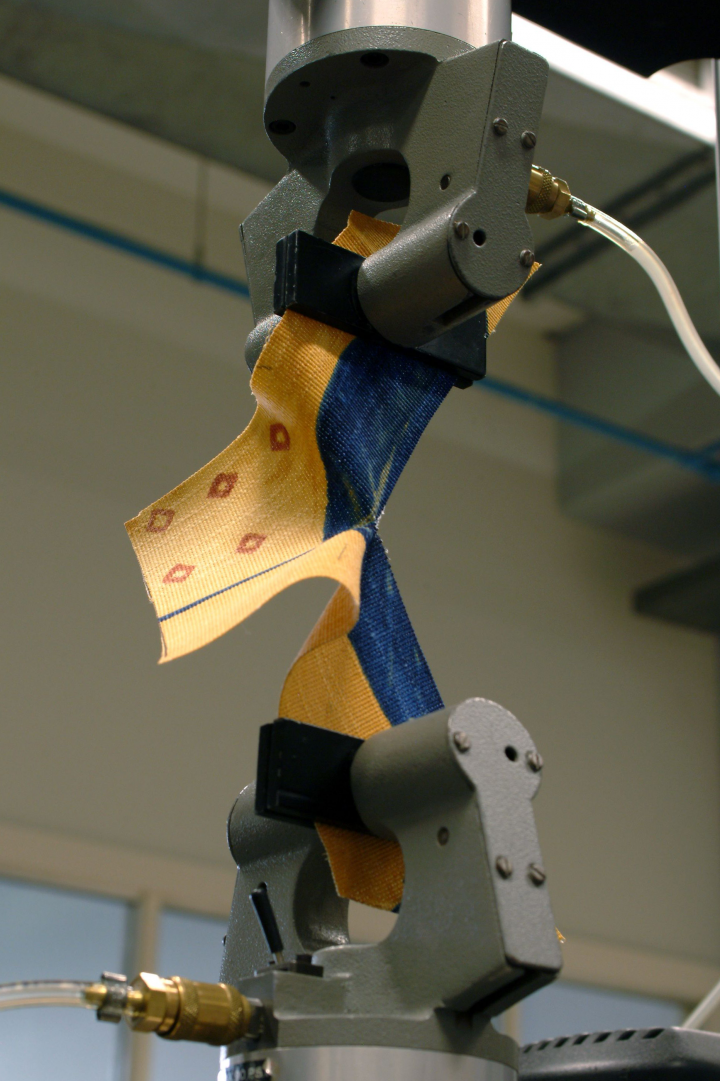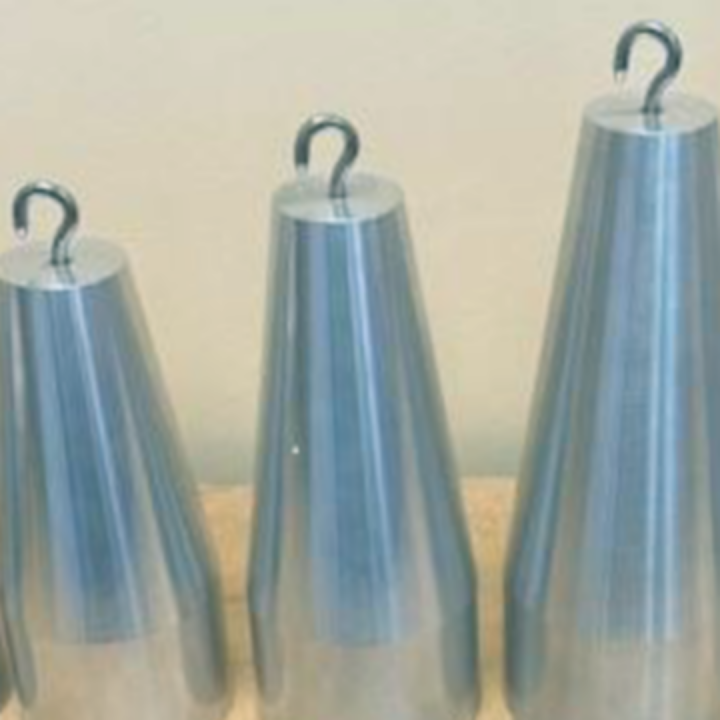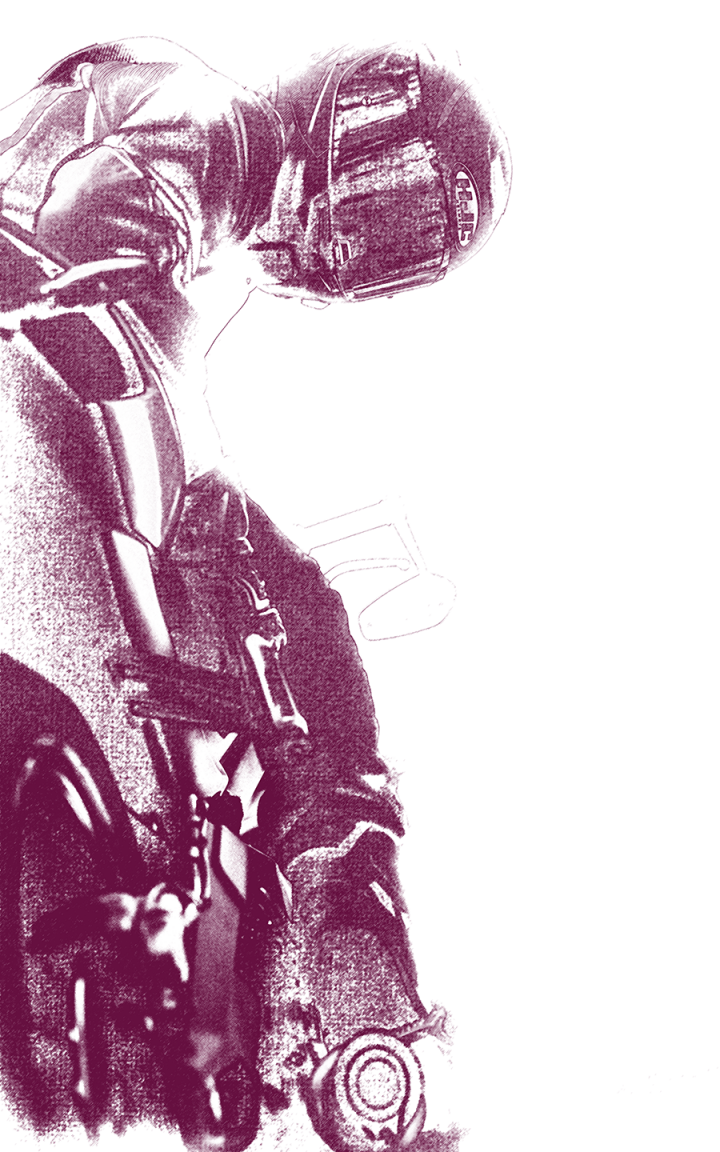Centexbel tests motorcycle clothing and gloves according to the European standards EN17092 series (clothing) and EN13594:2015 (gloves).
EN17092-1:2020 - motorcycle clothing
Protective garments for motorcycle riders – Part 1: Test methods
The specifications for each type of motorcycle clothing are defined by:
- EN17092-2:2020 - Class AAA garments
- EN17092-3:2020 - Class AA garments
- EN17092-4:2020 - Class A garments
- EN17092-5:2020 - Class B garments
- EN17092-6:2020 - Class C garments
The five test levels cover three key zones of the garment:
- Zone 1: shoulder, elbow, knee, hip - impact protectors are recommended
- Zone 2: should be protected with extra layers of material
- Zone 3: moderate risk of abrasion damage
Classification AAA: The highest level, with the machine spinning at 707.4rpm (the velocity of the sample holder being equivalent to 120km/h) in Zone 1, at 442.1rpm (equivalent to about 75km/h) in Zone 2 and at 265.3rpm (equivalent to around 45km/h) in Zone 3.
Classification AA: More suited to touring gear, this specifies Zone 1 at 412.6rpm, 265.3rpm in Zone 2 and 147.4rpm (the equivalent of around 25kmh) in Zone 3.
Classification A: Deemed suitable for urban riding, with Zone 1 requiring 265.3rpm and 147.4rpm in Zone 2. There’s no requirement for abrasion resistance in Zone 3 materials.
Classification B is the same as A, but impact protectors are not required.
Classification C covers garments such as the mesh under-suits that have impact protection for off-road riding.
Tests on protective garments for motorcycle riders
1. Impact test
- The used protector should be able to withstand a force of 50 Joule (= dropping a weight of 5kg from a height of +/- 1m)
- Applied force = 5kg/50 Joule
2. Test method for the determination of impact abrasion resistance (Darmstadt method)
The test procedure simulates the stress that is put on the protective garments of an average rider with a body mass of 75 kg and height of 1,75 m when sliding from variable initial speeds to standstill on a real
concrete road surface.
The translational sliding process is transferred into a scaled rotational system. Three samples of the material to be tested are mounted in sample holders attached to three arms of a rotating sample carrier positioned above a concrete tile (road surface). An electric motor accelerates the rotor to which the sample carrier is attached to a pre-selected number of revolutions per minute, with the samples not yet touching the concrete tile. After reaching the target velocity, the motor is switched off and the rotor is released to fall onto the concrete tile. As in a real accident, after touching the concrete tile surface, friction forces between the test samples and concrete tile decelerate the rotor until it stops. In order to implement an empirically determined real surface pressure of 18,75 kPa, the test apparatus uses a smaller total contact area in conjunction with an equivalent reduced inertia in the rotating parts.
Nine identical material test samples are tested during three test runs, completing one test cycle. After each test run of the test cycle, the samples are assessed for hole formation.
3. Seam strength
The strength of the Structurally Strong Seams (SSS) of garments, in the various zones shall meet the following requirements:
Seam Strength (N/mm) according to zone
Zone 1: 12 N/mm
Zone 2: 12 N/mm
Zone 3: 8 N/mm
Protector pocket material (if present): 4 N/mm
Three test pieces of each seam or joint type, including all layers of materials of the garment that are present in the seam or joint, shall be tested according to the test procedure in EN 13594:2015, Annex B.
Each type of seam or joint between materials forming the structural strong layer (SSL) shall be tested. The seam strength shall be calculated by dividing the breaking force by the length of the tested seam. The calculated value of each specimen of each seam type shall meet the above mentioned minimum requirements. Where a seam joins the materials of two zones, the seam is subject to the higher of the two zone requirements, if applicable.
4. Tear strength
Tear strength requirements according to zone
- Zone 1: 50 N
- Zone 2: 50 N
- Zone 3: 35 N
- Protector pocket material (if present): 10 N
The test is performed on the Instron apparatus (see picture of a classical tear strength test)
Leather is tested in accordance with EN ISO 3377-1:2011, whereas materials others than leather (e.g. textiles, coated fabrics) is tested in accordance with EN ISO 4674-1:2016, method B with the exception that the number of test pieces is 6 (see EN 17092-1:2020, Table 1).
5. Garment restraint
- connection between two-piece suits: top and bottom of a motorcycle suit must be securely fastened together. A force of 100N is applied to the bottom for 60 seconds to see if the fasteners between top and bottom remain intact.
- sleeve restraint: sleeves of garments shall have a fastening or restraint system present to limit the possibility that the sleeves may slide up the arm in the event of an accident. These fastening systems reduce the sleeve circumference between the open and closed (or loosest and tightest) states and, when examined in accordance with EN 17092-1:2020, for each sleeve, it shall not be possible to extract the test cone (see picture) from the sleeve or, in the case of loop restraints, the distance between point A and point B shall not be more than 140 mm.
- closure of fasteners
6. Fit and ergonomics
Visual check of the clothing and an ergonomics test with test person taking place ON TOP OF A MOTORCYCLE.
Non-exhaustive list of questions that need to be answered by YES/NO by the test person seated on the motorcycle:
- Is it possible to perform the following actions without difficulty?
- Sit on a motorcycle as you are riding
- Make the necessary body movements and position changes required on the motorcycle
- While holding both handles, turn around to look behind
- Are all impact guards still correctly positioned on the appropriate body parts as you perform the movements
- Is the garment free of unnecessary tightness, restricting body movement or blood flow
- Does the garment still fit without issue when putting on and taking off the helmet?
EN13594:2015 - motorcycle gloves
Protective gloves for motorcycle riders – Requirements and test methods
Motorcyclists’ gloves are intended to give protection against ambient conditions without unduly reducing the users’ dexterity in operating the motorcycle’s controls and switches. In addition, the gloves are intended to give mechanical protection to the hands and wrists in accidents. The particular hazards common to motorcycle accidents are impacts with the motorcycle, conflicting vehicles, road furniture, and/or the road surface.
The selection of the gloves by a rider depends on a variety of factors, such as the motorcycling discipline, the weather conditions, the frequency of putting on and taking off the gloves, and the duration that the gloves are typically worn. In order to encourage the adoption of certified protection by the highest possible number of users, two performance levels are specified for gloves.
These are level 1 for gloves designed to give protection while having low ergonomic penalties associated with their use and level 2 for gloves providing increased protection with respect to level 1.
- Level 1 with knuckle protection
- Level 2 with knuckle protection
- Level 1 without knuckle protection
Testing on gloves
Ergonomics:
- visual examination for sharp points or sharp edges
- ergonomics test. This also requires mounting on the motorcycle.
Measurements of dimensions and length
Closures of gloves:
- the glove has to remain properly closed after pulling the test wrist with a certain force.
Tear strength
Seam strength
-
see video below
Cut resistance
Impact abrasion resistance
Impact test on knuckles
Further information on tests on protective gloves:




